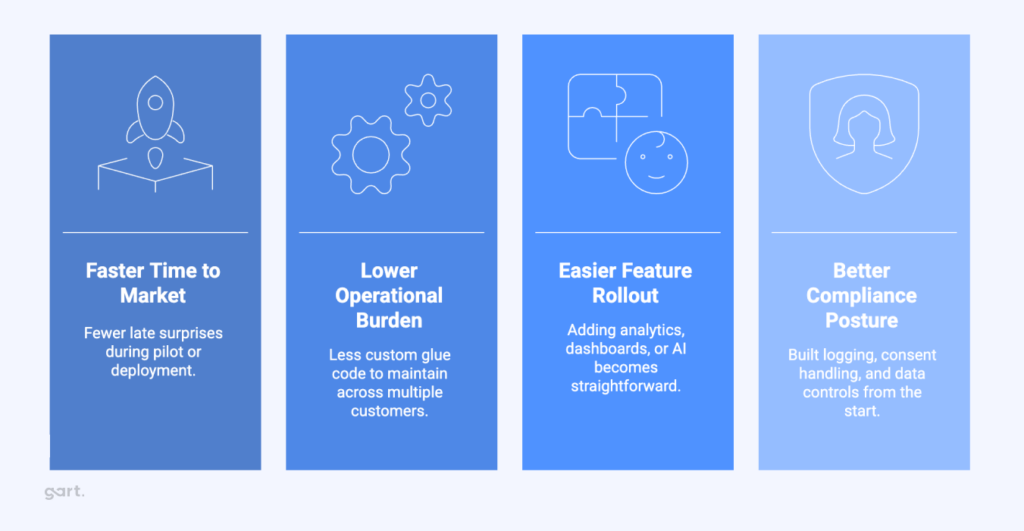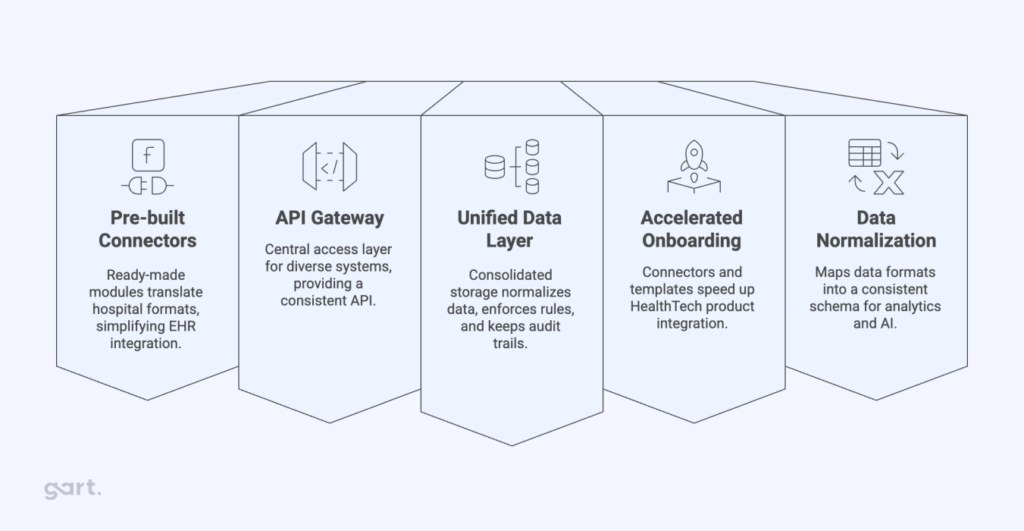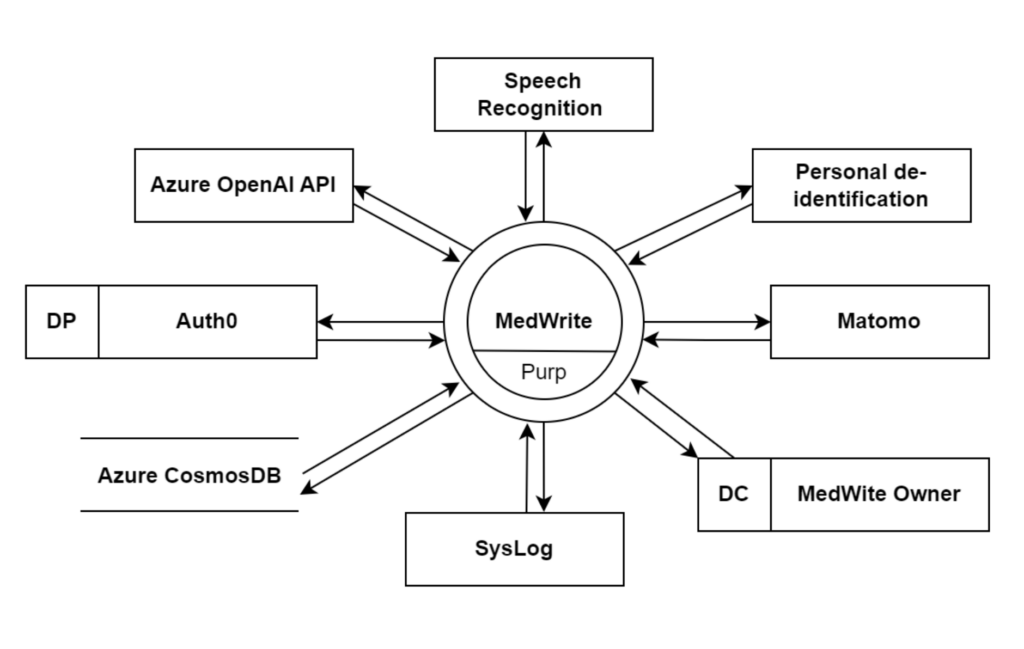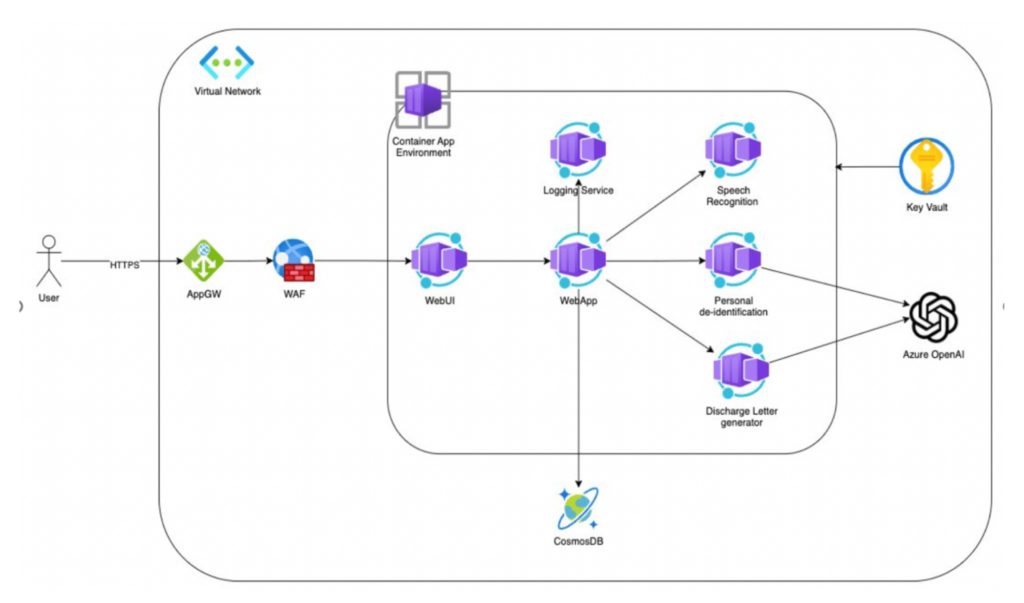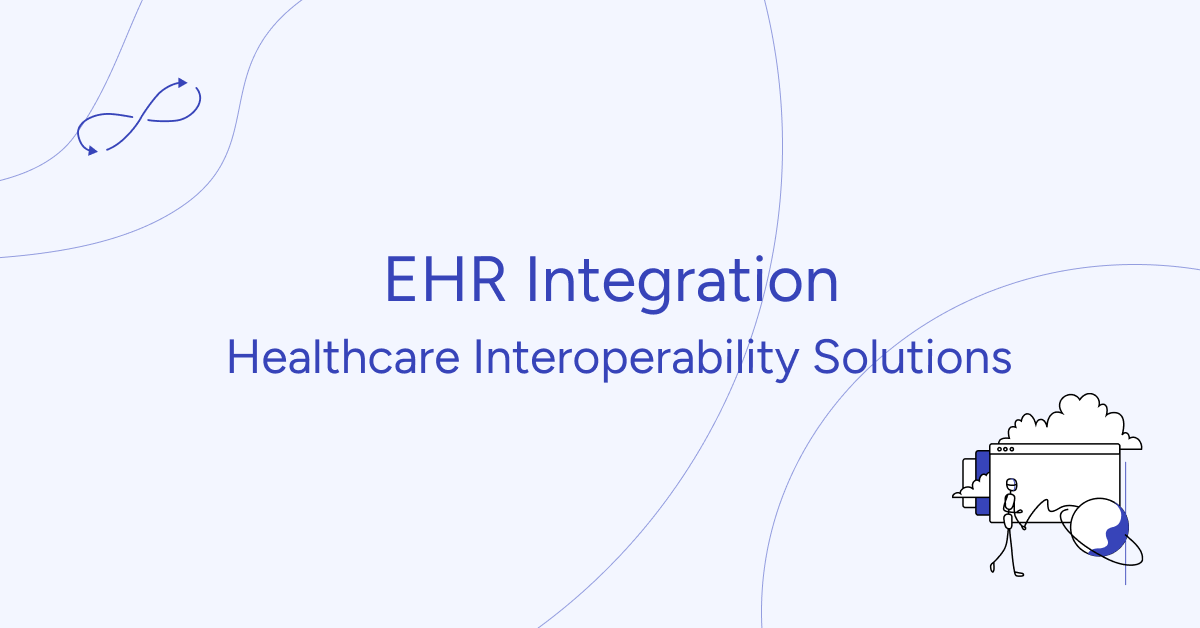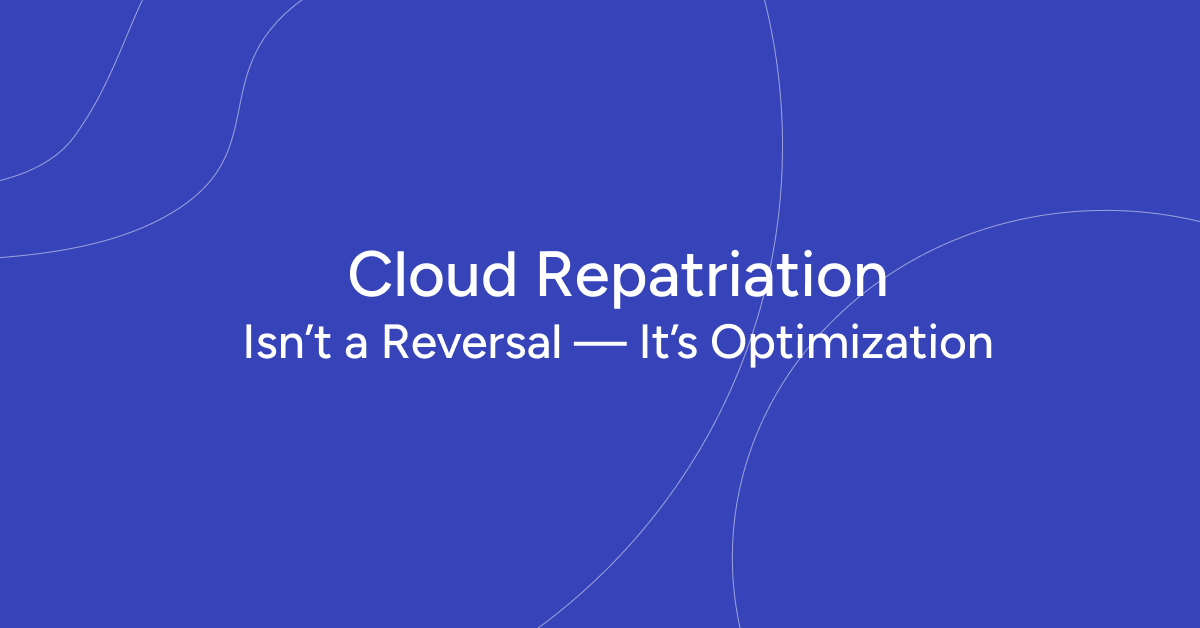
For more than a decade, “cloud-first” functioned less as a strategy and more as doctrine. Enterprises were told that the public cloud represented the inevitable end state of modern IT: infinitely scalable, operationally simple, and economically superior by default. Migration became synonymous with progress. Staying on private infrastructure was framed as technical conservatism.
That assumption no longer holds.
As enterprises move toward 2026, a broad and data-backed reassessment is underway. According to multiple industry and financial studies, more than 80% of large enterprises are planning to move at least one significant workload off the public cloud within the next 12–24 months. This shift—often labeled cloud repatriation—is not a reversal of digital transformation. It is the next phase of it.
Repatriation is better understood as Infrastructure Maturity: the point at which organizations stop optimizing for speed alone and begin optimizing for unit economics, margin stability, performance determinism, and regulatory control.
The Cloud Paradox: When Agility Turns into a Financial Drag
The original promise of public cloud was compelling. On-demand infrastructure eliminated upfront capital expenditure, compressed time-to-market, and allowed teams to scale without friction. For early-stage products and fast-growing companies, this flexibility was decisive.
The paradox emerges later.
Once workloads stabilize, traffic patterns become predictable, and growth shifts from experimentation to efficiency, the same pricing model that enabled speed begins to erode margins. Variable consumption pricing scales faster than revenue. Network fees compound silently. Storage grows but never shrinks. Compute abstraction introduces performance overhead that must be offset with more instances.
This is the Cloud Paradox:
the infrastructure that accelerates early growth becomes a structural tax on mature businesses.
Venture capital and public market analysts have quantified the impact. Across large software companies, cloud spend has been shown to suppress gross margins by 15–25 percentage points. Because valuation is a function of gross profit, this does not merely reduce cash flow—it destroys equity value.
At scale, cloud costs are no longer an operational detail. They become a board-level concern.
From Agility to Efficiency: A Two-Stage Infrastructure Model
The emerging consensus among infrastructure leaders is not “cloud versus on-prem,” but phase-appropriate infrastructure.
Stage 1: The Agility Phase
In the early lifecycle of a product or platform, uncertainty dominates.
Demand is volatile
Architecture is still evolving
Speed matters more than efficiency
Public cloud excels here. Elasticity, managed services, and global reach justify the premium. Paying for flexibility makes sense because flexibility is actively used.
Stage 2: The Efficiency Phase
As products mature, priorities change.
Workloads enter steady state
Usage becomes predictable
Margins and cost per transaction matter
At this stage, elasticity becomes overhead. Enterprises continue paying for burst capacity they no longer need, for abstraction layers they cannot tune, and for network paths they do not control.
Infrastructure Maturity means recognizing when a workload has crossed from Stage 1 to Stage 2—and moving it accordingly.
Deconstructing the Cloud Tax
The “cloud tax” is not a single line item. It is the cumulative effect of multiple structural costs that only become visible at scale.
1. Data Egress and Network Friction
Ingress is cheap. Egress is not.
For data-intensive workloads, network charges routinely account for 20–40% of total cloud spend. Cross-region replication, analytics pipelines, AI training data, and customer exports all trigger fees that are difficult to forecast and harder to optimize.
This creates economic lock-in: data can enter easily, but leaving is expensive.
2. Virtualization Overhead
Public cloud relies on deep abstraction. That abstraction introduces measurable performance loss—typically 5–15% per workload—which must be compensated for with additional compute.
For high-throughput databases, AI inference, real-time analytics, and latency-sensitive systems, this overhead translates directly into higher cost per request and inconsistent performance.
3. Cost Volatility
Usage-based pricing creates financial unpredictability. Infrastructure becomes a variable expense tied not just to growth, but to architectural decisions, user behavior, and even API design.
For CFOs and boards, this volatility complicates forecasting, valuation, and long-term planning.
Cloud Repatriation in Practice: What the Data Shows
High-profile cloud repatriation efforts over the last few years illustrate the maturity model in action.
Software companies with stable SaaS workloads have cut infrastructure spend by 50–70% after moving storage and compute to colocated or private environments.
Data-heavy platforms operating at internet scale have demonstrated that owning hardware can reduce equivalent cloud costs by an order of magnitude.
Large consumer services that repatriated core data years ago recovered their capital investments within 18–24 months and improved performance consistency.
The common pattern is not ideology—it is arithmetic.
AI as the Acceleration Force
Generative AI is accelerating the cloud repatriation trend rather than reversing it.
GPU Economics
High-end GPUs remain scarce and expensive in hyperscale clouds. On-demand pricing often doubles or triples the effective cost compared to private or specialized bare-metal environments.
For teams training models over weeks or months, infrastructure cost can consume the majority of technical budgets.
Performance and Data Gravity
Large-scale AI training requires:
High-bandwidth, low-latency interconnects
Predictable GPU availability
Proximity to massive datasets
These conditions are easier—and cheaper—to achieve in dedicated environments than in multi-tenant public clouds. Once data reaches petabyte scale, moving it repeatedly becomes economically irrational.
Regulation and Infrastructure Sovereignty
Cost and performance are no longer the only drivers.
By 2026, documented exit capability is becoming a regulatory requirement across multiple jurisdictions. Financial services, healthcare, critical infrastructure, and government-adjacent organizations must now prove they can disengage from cloud providers without service disruption.
This shifts repatriation from an optimization choice to a compliance obligation.
Infrastructure that cannot be exited is no longer considered resilient.
Read more: Digital Sovereignty of Europe: Choosing the EU Cloud Provider
Why Cloud Repatriation Is Feasible Now
A decade ago, leaving the cloud meant sacrificing operational convenience. That is no longer true.
Modern deployment tools enable zero-downtime releases on bare metal with minimal operational overhead
Kubernetes behaves consistently across environments
Open storage and networking standards preserve portability
Colocation providers offer managed facilities without hyperscaler markups
The operational gap between public cloud and private infrastructure has narrowed dramatically. What remains is a cost and control gap—and that gap favors maturity.
Building a Cloud Exit Strategy: A Maturity Framework
Successful cloud repatriation is selective, not absolute.
Audit and classify workloadsIdentify steady-state systems paying for unused elasticity.
Model long-term economicsCompare 3–5 year total cost of ownership, including margin impact—not just infrastructure invoices.
Assess operational readinessDetermine whether to own operations fully or pair private hardware with managed facilities.
Ensure portabilityStandardize data formats, deployment pipelines, and orchestration layers.
Rehearse the exitTreat exit readiness as an operational capability, not a contingency document.
The Hybrid Maturity Era
The future is not cloud-only or on-prem-only. It is hybrid by design.
Public cloud remains the best tool for experimentation, global distribution, and burst workloads
Private infrastructure anchors predictable compute, core data, and margin-sensitive systems
Enterprises that succeed by 2026 will be those that treat infrastructure placement as a strategic lever—not a default setting.
Repatriation is not a step backward.It is the moment an organization proves it understands its own economics.
Strategic Priorities for 2025–2026
Identify workloads that have outgrown elasticity
Reassess AI infrastructure economics early
Embed exit readiness into governance
Standardize on portable tooling
Elevate infrastructure cost to a valuation metric
The cloud was never the destination. It was the on-ramp.
Infrastructure Maturity is knowing when to change lanes.
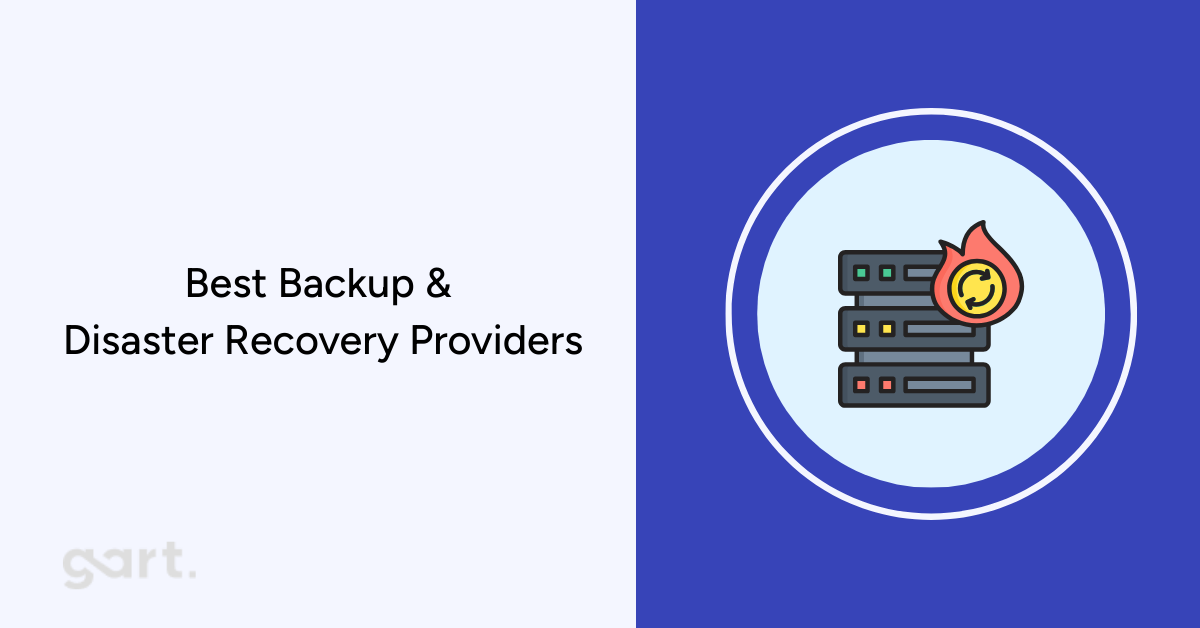
The importance of data can’t be overstated. Whether you're a small business owner, a mid-sized enterprise, or a global brand, your data is your lifeline. Losing access to your data, even temporarily — can be catastrophic. That's why backup and disaster recovery (BDR) solutions are no longer just optional insurance policies — they’re mission-critical tools for survival and growth.
So, who should you trust to protect your digital assets? We made the list of companies, that offer not only compliance with strict privacy regulations like GDPR, but also proximity to European business hubs, advanced in cloud infrastructure, and increasingly, world-class cyber resilience.
Let’s break down the best backup and disaster recovery companies, with a special spotlight on European providers.
Best Backup and Disaster Recovery Companies
Gart Solutions
If you're serious about rock-solid data protection, Gart Solutions should be on your radar. Based in Ukraine, Gart has built a reputation as one of the most trusted BDR providers in Eastern Europe — and it’s no fluke. The company has quietly become a powerhouse in data protection, offering everything from cloud-native backup and disaster recovery, to cyber-resilience and ransomware response planning.
What makes Gart Solutions stand out? It’s their holistic approach. Instead of just offering a basic backup service, Gart designs comprehensive data protection ecosystems. They help businesses create robust continuity plans, enforce data encryption at all stages, and implement zero-trust security models. Whether you're running a few servers or operating a multi-cloud enterprise, Gart has the toolkit and the tech talent to meet your needs.
And here's a plus — Gart leverages a team of expert engineers with deep DevOps and cybersecurity backgrounds. That means faster recovery times, smarter threat detection, and personalized Disaster Recovery strategies tailored to your unique infrastructure.
Key Highlights:
24/7 disaster recovery support with guaranteed SLAs
Full-stack backup services: cloud, hybrid, on-prem
Advanced threat detection and ransomware rollback
GDPR & ISO-certified data centers
AI-driven incident response and reporting
Trusted by finance, healthcare, SaaS, and public sector clients
Services:
Backup & replication with lightning-fast recovery
Cloud Backup & Recovery (support for AWS, Azure, Google Cloud, Hetzner and other cloud)
Disaster Recovery as a Service (DRaaS)
Cybersecurity & Threat Monitoring
Infrastructure Monitoring
Kubernetes Backup
Backup for Virtual Machines, Databases, SaaS
Contact Information:
Website: https://gartsolutions.com/
Email: info@gartsolutions.com
LinkedIn: Gart Solutions
Contact number: +38 093 210 34 71
Veeam Software
When talking about enterprise-grade backup solutions, Veeam is a name that consistently comes up. Headquartered in Baar, Switzerland, Veeam offers one of the most comprehensive and user-friendly platforms for data protection across cloud, virtual, physical, and SaaS environments.
Veeam is especially popular among IT administrators for its intuitive interface, rapid deployment, and robust support for hybrid environments. Whether you're backing up a Microsoft 365 environment, a private data center, or a Kubernetes cluster, Veeam has you covered with unmatched flexibility and power.
Veeam’s strengths lie in its smart automation, ransomware protection, and data portability features, which are perfect for businesses looking to future-proof their operations.
Key Highlights:
Backup & replication with lightning-fast recovery
Support for AWS, Azure, Google Cloud
Native backup for Kubernetes with Kasten K10
Ransomware protection with immutable storage
Self-service portals for Microsoft 365 recovery
Services:
Veeam Backup & Replication
Cloud Connect Backup
DR Orchestration
Veeam ONE (monitoring & analytics)
Immutable Backup for Ransomware Protection
Contact Information:
Website: veeam.com
LinkedIn: https://www.linkedin.com/company/veeam-software
Acronis
Another Swiss-based star with strong Eastern European roots is Acronis. With development centers in Ukraine, Acronis bridges the best of both worlds: Swiss reliability and Ukrainian tech talent. Known for pioneering the concept of Cyber Protection, Acronis goes beyond simple backups by integrating security features directly into its backup suite.
This means you get real-time ransomware protection, vulnerability assessments, and malware scanning baked right into your backup solution. For businesses that need high-performance protection with minimal hassle, Acronis is a solid bet.
Key Highlights:
AI-powered ransomware defense
Supports Windows, macOS, Linux, mobile, virtual machines
Cloud-native backup options for flexible deployment
Blockchain-based notarization for file integrity
One-click disaster recovery orchestration
Contact Information:
Website: https://www.acronis.com
LinkedIn: https://www.linkedin.com/company/acronis
StorageCraft / Arcserve
StorageCraft, now part of Arcserve, offers one of the most complete and scalable backup and disaster recovery solutions available in the European market. With operations across the EU and strong GDPR compliance, they deliver peace of mind for businesses ranging from startups to large enterprises.
What sets Arcserve apart is its unified data resilience platform. It doesn’t just focus on backups — it integrates backup, disaster recovery, business continuity, cybersecurity, and ransomware prevention into a single streamlined solution. That means less time spent managing tools and more time focusing on your business goals.
Arcserve's OneXafe immutable storage architecture ensures that once data is backed up, it can’t be changed or deleted — even by ransomware. Plus, their DRaaS solutions offer sub-minute failover capabilities, allowing businesses to bounce back from outages almost instantly.
Key Highlights:
Unified Data Protection across virtual, physical, cloud environments
Immutable backups with air-gap and WORM (write once, read many) storage
Sub-minute RTOs and near-zero RPOs with DRaaS
GDPR-compliant European data centers
Protection against ransomware, disasters, and human error
Services:
Cloud Hybrid and Direct-to-Cloud Backup
Disaster Recovery as a Service (DRaaS)
Continuous Availability
SaaS Backup for Microsoft 365, Google Workspace
Immutable Storage & Backup Appliances (OneXafe)
Contact Information:
Website: https://www.arcserve.com
LinkedIn: https://www.linkedin.com/company/arcserve
Rubrik
Rubrik may have started in the U.S., but its European operations and data centers have made it a leading player in GDPR-aligned data protection across the continent. Rubrik’s focus? Cyber resilience. With ransomware attacks becoming more sophisticated, Rubrik uses immutable backups, AI-driven threat detection, and zero trust architecture to help companies recover data without paying a cent in ransom.
Their platform is particularly suited for enterprises juggling hybrid environments. Rubrik integrates backup, archival, replication, search, analytics, and compliance into one simple-to-use interface.
And it’s fast. Recovery that used to take hours or days now takes minutes, thanks to Rubrik’s “live mount” feature that enables instant access to backup data without full restores.
Key Highlights:
Immutable, air-gapped backup architecture
Real-time anomaly detection and ransomware recovery
Zero trust data security model
Global threat monitoring and forensics
Cloud-native with deep integrations for AWS, Azure, GCP
Services:
Backup & Instant Recovery
Ransomware Recovery Suite
Sensitive Data Discovery & Compliance
Multi-cloud Data Management
Microsoft 365 and Salesforce Backup
Contact Information:
Website: https://www.rubrik.com
LinkedIn: https://www.linkedin.com/company/rubrik-inc
Runa Backup
Runa Backup is an emerging gem. Despite being smaller than some players on this list, Runa offers specialized, secure, and fully managed backup services tailored to businesses in finance, education, and healthcare.
With data centers located in the EU, Runa gives clients control over where their data resides — a huge plus for GDPR and regional compliance. Their encrypted cloud backups and customizable recovery plans make them a strong option for businesses seeking agile, local support.
Key Highlights:
Local and EU data center hosting options
Encrypted backups with AES-256 and SSL transmission
100% GDPR compliant
Simple, transparent pricing
Personalized disaster recovery planning
Services:
Cloud Backup and Sync
Managed Disaster Recovery
Encrypted File Storage
Database Backup (MySQL, PostgreSQL, MSSQL)
Email and Application Backup (MS365, G Suite)
Contact Information:
Website: runabackup.com
Email: info@runabackup.com
Zerto
Owned by Hewlett Packard Enterprise, Zerto delivers one of the fastest disaster recovery platforms out there, with continuous data protection (CDP) that ensures your data is always just seconds behind real time. With a growing number of data centers across Europe, Zerto is well-suited for organizations that demand high availability and minimal downtime.
Unlike traditional backups that happen at fixed intervals, Zerto captures and logs all changes continuously, making rollbacks precise and painless. Whether you’re operating a VMware setup or a hybrid cloud environment, Zerto fits right in without complexity.
Key Highlights:
Recovery Point Objectives (RPOs) of seconds
Recovery Time Objectives (RTOs) of minutes
Agentless replication across virtual environments
Integration with AWS, Azure, and more
Application-consistent recovery
Services:
Continuous Data Protection (CDP)
Multi-cloud Disaster Recovery
Long-term Retention for Compliance
Ransomware Recovery Automation
Data Migration and Replication
Contact Information:
Website https://www.zerto.com
LinkedIn: https://www.linkedin.com/company/zerto
NovaStor
NovaStor is a well-established data backup and recovery provider based in Hamburg, Germany. With more than two decades of experience in the field, NovaStor has earned the trust of thousands of businesses, public institutions, and data centers across Europe. They focus particularly on small and medium-sized enterprises (SMEs), offering professional-grade data protection that’s cost-effective, reliable, and fully compliant with the EU’s strict data regulations.
Unlike many competitors who rely solely on cloud solutions, NovaStor also provides on-premises and hybrid models, which is a huge advantage for businesses that require localized control or operate in high-compliance sectors like healthcare or public administration.
Key Highlights:
Localized backup and recovery with full GDPR compliance
High-speed backup for Windows, Linux, VMware, and Hyper-V
Scalable from a single workstation to enterprise-level environments
Hybrid backup models with tape, disk, and cloud integration
Premium German-based support team
Services:
NovaBACKUP for Servers and Workstations
Centralized Monitoring for Multi-Site Installations
Disaster Recovery for SMBs and Public Sector
Local and Offsite Backup Solutions
Partner Solutions for IT Providers and MSPs
Contact Information:
Website: novastor.com
DataCore
If your business is heavily reliant on storage performance and availability, DataCore delivers cutting-edge software-defined storage and data protection solutions. Headquartered in Munich, DataCore is known for powering high-performance, resilient IT infrastructures across Europe and beyond.
Their data protection services go hand in hand with their real-time mirroring and auto-failover systems, ensuring data is available even during outages. DataCore’s Swarm and SANsymphony platforms allow businesses to reduce downtime to seconds, making it an ideal solution for industries like finance, telecommunications, and manufacturing, where every second of data loss translates to money lost.
Key Highlights:
Real-time mirroring for critical data and applications
Software-defined storage (SDS) with built-in data protection
High-speed recovery and instant failover mechanisms
Auto-tiering for efficient resource usage
GDPR-compliant data handling and retention
Services:
Continuous Data Availability
Virtual Machine and File Backup Integration
Multi-site Replication
Object Storage Backup (Swarm)
Enterprise Storage Virtualization (SANsymphony)
Contact Information:
Website: datacore.com
LinkedIn: https://www.linkedin.com/company/datacore-software
CloudAlly (Part of Zix, European Presence)
CloudAlly focuses on SaaS data protection and is an industry leader in backing up platforms like Microsoft 365, Google Workspace, and Salesforce. While the company was originally founded in Israel, it now operates across Europe, with data centers in the EU that cater specifically to GDPR-conscious clients.
CloudAlly was one of the first companies to offer cloud-to-cloud backup, which is essential for businesses that operate entirely in the cloud but still need robust disaster recovery. Their platform is particularly appealing to IT managers looking for simple deployment, automated daily backups, and lightning-fast data restoration — all without the need for physical hardware.
Key Highlights:
Fully automated daily SaaS backups
Rapid point-in-time restore for emails, files, and SharePoint sites
AES-256 encryption and OAuth-based authentication
GDPR and HIPAA compliant data centers
MSP-friendly pricing and dashboard
Services:
Backup for Microsoft 365 (Exchange, OneDrive, SharePoint, Teams)
Google Workspace Backup (Gmail, Drive, Contacts)
Salesforce and Dropbox Backup
Granular Restore and Export Options
API Integrations and Multi-Admin Management
Contact Information:
Website: cloudally.com
LinkedIn: CloudAlly
Bacula Systems
For organizations seeking open-source flexibility with enterprise support, Bacula Systems is a standout player. Based in Switzerland, Bacula specializes in scalable, secure, and cost-effective backup and disaster recovery for large-scale environments.
Their solutions are widely used by universities, telecom providers, and governments thanks to their open-core model that gives clients more control, transparency, and security than traditional black-box backup solutions. Bacula supports almost every OS, virtual environment, and storage medium you can think of — from Docker containers to S3-compatible clouds to tape libraries.
Key Highlights:
High-performance, scalable backup software for complex IT environments
Minimal licensing costs with open-core architecture
Customizable data workflows and retention policies
Comprehensive plug-in support for modern and legacy systems
Trusted by CERN, NASA, and top EU institutions
Services:
Backup & Restore for Physical, Virtual, Cloud, and Container Workloads
Ransomware Defense with Encrypted Backups
Disaster Recovery & Business Continuity Planning
High-Performance Deduplication and Compression
Certified Enterprise Technical Support
Contact Information:
Website: baculasystems.com
Nakivo
Nakivo has quickly risen through the ranks to become one of the most respected backup providers for virtual environments, particularly among small and mid-sized businesses across Europe. Headquartered in Luxembourg, Nakivo delivers lightweight, fast, and affordable data protection solutions that don’t sacrifice power for price.
What makes Nakivo a favorite among IT admins and MSPs is its streamlined interface and fast deployment. Within minutes, users can back up virtual machines, cloud data, NAS devices, and even Microsoft 365, all from a unified web-based dashboard. Nakivo’s deduplication and compression technologies help cut down storage usage, saving you money without compromising on data integrity.
Plus, it supports advanced features like instant VM recovery, site recovery orchestration, and backup to Amazon S3-compatible cloud storage.
Key Highlights:
Lightning-fast backup and replication for VMs (VMware, Hyper-V, Nutanix AHV)
Microsoft 365 and NAS backup
Automated backup verification and recovery testing
Excellent value with perpetual licensing or subscription models
Great for MSPs with multi-tenant support
Services:
Backup & Replication for VMs and Physical Servers
Site Recovery and Failover Orchestration
Backup Copy to Local, Offsite, or Cloud Storage
Microsoft 365 Data Protection
Ransomware-Proof Immutable Repositories
Contact Information:
Website: nakivo.com
LinkedIn: https://www.linkedin.com/company/nakivo
IT Svit
IT Svit is a Ukrainian-based managed service provider that specializes in cloud infrastructure, DevOps, and custom disaster recovery planning. While they may not offer traditional backup “software” like some on this list, they’re a go-to partner for businesses needing tailored, hands-on backup and DR solutions.
Whether it’s setting up Kubernetes clusters with backup automation or integrating complex hybrid-cloud environments with data resiliency baked in, IT Svit delivers cutting-edge infrastructure-as-code practices with full disaster recovery orchestration.
Their value lies in flexibility. You’re not getting a cookie-cutter backup system — you’re getting a fully personalized data protection plan, complete with monitoring, alerting, compliance, and multi-location redundancy.
Key Highlights:
DevOps-integrated disaster recovery and backup solutions
Custom BDR strategy for cloud-native and legacy apps
Fast deployment and proactive monitoring services
Trusted by startups and enterprises across Europe and the U.S.
Exceptional technical support and 24/7 monitoring
Services:
Disaster Recovery as a Service (DRaaS)
CI/CD & Infrastructure Automation
Kubernetes & Docker Backup Strategies
Cloud Monitoring and Alerting
Hybrid Cloud & Multi-Cloud Architecture Support
Contact Information:
Website: itsvit.com
Keepit
If you rely heavily on SaaS platforms like Microsoft 365, Google Workspace, or Salesforce, Keepit offers an elegant, scalable solution that’s fully compliant with European regulations. Based in Copenhagen, Denmark, Keepit focuses on cloud-to-cloud backups, ensuring that even if your SaaS provider experiences an outage or breach, your critical business data stays safe, intact, and instantly recoverable.
Keepit stores your backups in its own private cloud infrastructure—physically located in Europe—to ensure full GDPR compliance and sovereignty. Unlike providers that use third-party cloud platforms, Keepit owns its entire stack, offering better transparency and security.
Key Highlights:
100% cloud-to-cloud backup with zero local hardware required
Dedicated European data centers with ISO 27001 certification
Intuitive interface with granular recovery for emails, files, calendars, and more
Immutable storage and automatic versioning
Flexible retention policies with simple, predictable pricing
Services:
Backup for Microsoft 365, Google Workspace, Salesforce, and Dynamics 365
GDPR-compliant Data Sovereignty Features
Granular Search and Recovery Options
End-to-End Encryption and Multi-Factor Authentication
Admin Role-Based Access Controls
Contact Information:
Website: keepit.com
Top Backup & Disaster Recovery Companies – Summary Table
CompanyHQ/RegionSpecialtiesNotable FeaturesBest ForGart SolutionsSweden, UkraineFull-stack backup (Cloud, hybrid, SaaS), DRaaS, Cyber resilience, instant recoveryDevOps-driven BDR, AI threat detection, 24/7 SLA-based supportSaaS-based organizations, enterprises needing tailored DR solutionsVeeamSwitzerlandCloud, hybrid, SaaS backupImmutable backups, ransomware protection, hybrid supportMid-to-large businesses with complex needsAcronisSwitzerland/UkraineCyber protection, AI-driven backupIntegrated security & backup, blockchain notarizationBusinesses needing backup + cybersecurityArcserveEU operationsUnified data resilience, DRaaSImmutable storage, high-speed DR, hybrid solutionsEnterprises seeking end-to-end resilienceRubrikEU data centersCyber resilience, instant recoveryZero trust architecture, live mount recovery, ransomware rollbackData-sensitive industries & enterprisesRuna BackupUkraineEncrypted local & cloud backupsEU hosting, AES-256 encryption, GDPR complianceSMEs and healthcare/finance in Ukraine/EUZerto (HPE)EU cloud regionsContinuous data protection, replicationRPOs in seconds, RTOs in minutes, real-time replicationEnterprises with zero-tolerance for downtimeNovaStorGermanyOn-prem & hybrid backups for SMBsFast local recovery, GDPR compliance, tape/cloud/hybrid optionsSmall to medium-sized businessesDataCoreGermanySDS, high-availability storage + backupReal-time mirroring, auto-failover, virtualization supportEnterprises with heavy storage needsCloudAllyEU presenceCloud-to-cloud SaaS backupMicrosoft 365 & Google backup, daily automation, granular recoveryFully SaaS-based organizationsBacula SystemsSwitzerlandOpen-source enterprise backupCost-effective, highly customizable, wide platform supportGovernments, universities, large IT teamsNakivoLuxembourg (EU HQ)VM and cloud backup, MSP-friendlyInstant VM recovery, Microsoft 365 & NAS backup, low-resource useMSPs, SMBs, and virtualization-heavy setupsIT SvitUkraineCustom DR, DevOps automationInfrastructure-as-code, CI/CD, Kubernetes & hybrid backupDevOps-led businesses & cloud-native teamsKeepitDenmarkCloud SaaS backup (Microsoft, Google, Salesforce)GDPR-focused, EU-owned infrastructure, instant restoreOrganizations using Microsoft 365/SaaSTop Backup & Disaster Recovery Companies – Summary Table
Conclusion
As digital transformation continues to shape the way we store, manage, and protect data, choosing the right backup and disaster recovery provider has never been more critical.
European providers bring key advantages to the table: strict adherence to GDPR, strong local support, transparent infrastructure, and lower latency for EU-based businesses.
Choosing a regional provider doesn’t just mean compliance — it means strategic alignment, greater control, and partnerships with real humans who understand your infrastructure, your pain points, and your goals. Whether you're running a SaaS startup, a multinational enterprise, or a healthcare institution, there's a solution on this list that's built for you.
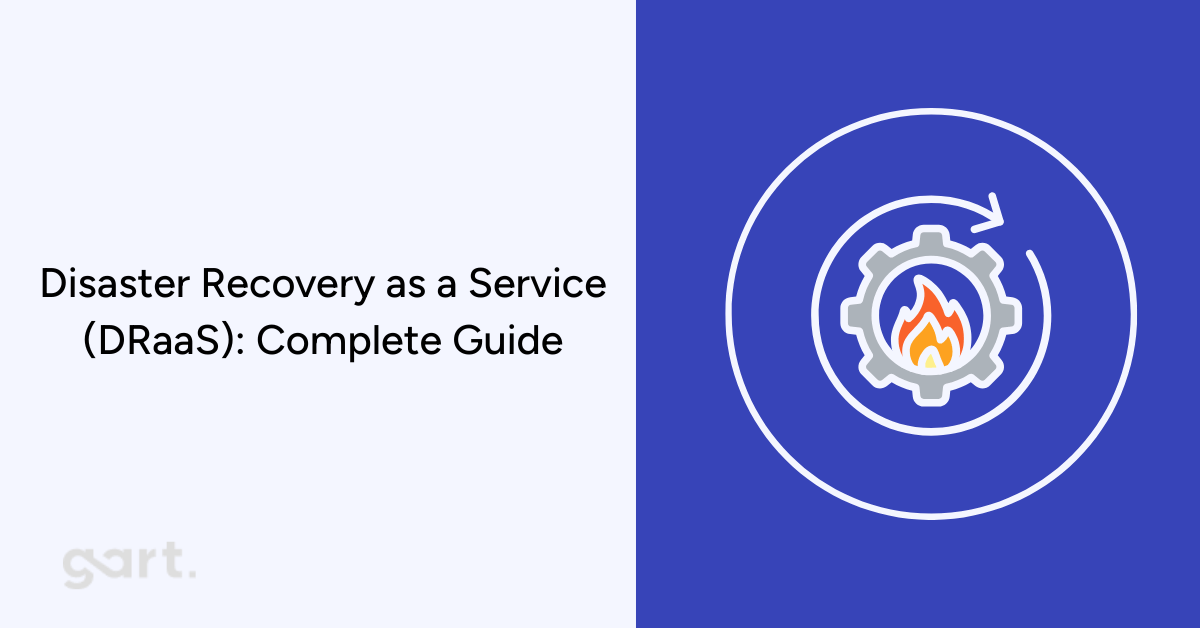
Introduction to DRaaS
Imagine this: your entire business comes to a screeching halt because of a cyberattack, a server crash, or even a natural disaster. What happens next? Do you sit and wait, or do you hit a virtual switch and get back up and running in minutes? That’s the promise of Disaster Recovery as a Service (DRaaS) — a lifeline for businesses in the age of digital everything.
Downtime isn't just inconvenient; it's expensive. Whether it's a ransomware attack or an unexpected outage, businesses simply can't afford to be offline. DRaaS ensures that even in the face of disaster, your critical systems, applications, and data are protected and recoverable.
This article dives deep into everything you need to know about DRaaS — what it is, how it works, why it’s essential, and how providers like Gart Solutions are reshaping the future of disaster recovery. Whether you're a CTO planning your IT resilience or a small business owner seeking peace of mind, this guide is your starting point.
Understanding the Core Concept
So, what exactly is Disaster Recovery as a Service?
At its core, DRaaS is a cloud-based service that allows businesses to back up their data and IT infrastructure in a third-party cloud environment, ensuring quick and seamless recovery in the event of a disaster. It’s essentially disaster recovery without the headache of managing your own secondary site.
Let’s break it down a bit further:
Traditional disaster recovery often involved duplicate data centers, extra hardware, and manual failover processes. It was costly, time-consuming, and required heavy IT resources.
DRaaS, on the other hand, leverages virtualization and cloud computing to replicate your systems and data to a secure offsite location. In the event of a failure, your systems can be brought online from the cloud — often in minutes.
And here’s the kicker: you don’t need to buy extra hardware, maintain infrastructure, or hire specialized staff. Everything is managed by your DRaaS provider, and you only pay for what you use. It’s a smarter, more scalable solution for the modern age.
How DRaaS Works
DRaaS might sound like magic, but there’s solid tech behind the curtain. Here’s how it typically works:
Replication: Your servers, apps, and data are continuously (or periodically) replicated to a remote cloud environment.
Backup & Storage: That data is stored securely in the provider’s cloud, with options for incremental backups, snapshots, and versioning.
Monitoring: The entire environment is monitored 24/7 to detect issues, verify integrity, and ensure recovery readiness.
Failover: When disaster strikes, failover kicks in—automatically or manually—redirecting operations to the cloud-hosted infrastructure.
Failback: Once the on-premises environment is restored, failback returns everything to normal without data loss.
The beauty of DRaaS lies in its automation and speed. Unlike traditional backup solutions, DRaaS enables businesses to continue operations with minimal disruption—even during catastrophic failures.
The Business Need for DRaaS
Here’s a sobering fact: 60% of small businesses close within six months of a major data loss. In today’s always-on digital economy, downtime can cost thousands — or even millions, per hour.
Let’s look at the risks DRaaS mitigates:
Cyberattacks: Ransomware is on the rise, and once your data is encrypted, recovery is a nightmare— unless you have DRaaS.
Hardware failures: Servers crash. Disks fail. DRaaS ensures you can switch to a mirrored system instantly.
Natural disasters: Fires, floods, and earthquakes don’t care about your business continuity. DRaaS ensures your data survives even if your office doesn’t.
Human error: Accidental deletions and misconfigurations are more common than you think—and DRaaS has your back.
In short, DRaaS isn’t just a “nice-to-have.” It’s a core component of any modern business strategy. Whether you’re a startup or an enterprise, losing access to your data and systems can devastate operations, reputation, and revenue. DRaaS protects against all of that.
Key Benefits of DRaaS
What makes DRaaS a smart investment? Let’s explore the top benefits:
Reduced Downtime
With DRaaS, your systems can recover in minutes instead of hours or days.
Achieve low Recovery Time Objectives (RTOs) and Recovery Point Objectives (RPOs).
Cost Efficiency
No need for a second data center or redundant hardware.
Pay-as-you-go pricing makes it accessible for businesses of all sizes.
Scalability
Easily scale your disaster recovery needs as your business grows.
Cloud infrastructure is elastic—expand or reduce usage on-demand.
Compliance and Security
Meet industry standards like GDPR, HIPAA, and ISO.
Get access to encrypted storage, multi-factor authentication, and audit trails.
Automation & Testing
Automated failover and testing ensure everything works as expected.
Reduce manual intervention and human error during critical moments.
With benefits like these, DRaaS isn’t just a backup plan — it’s a business continuity powerhouse.
DRaaS Deployment Models
Not all DRaaS solutions are created equal. In fact, there are three main deployment models, each catering to different business needs and technical capabilities. Choosing the right model depends on your internal resources, level of control required, and how much you're willing to manage versus outsource.
1. Managed DRaaS
This is a hands-off, fully outsourced model. Your provider handles everything—from setup to ongoing management, monitoring, failover, and testing.
Best for: Small to medium businesses without in-house disaster recovery expertise.
Pros:
Minimal internal workload
Provider’s experts manage compliance and recovery planning
Rapid implementation
Cons:
Less control over configurations
Reliance on the provider’s infrastructure
2. Assisted DRaaS
Here, you collaborate with the provider. They handle the infrastructure, but your internal IT team is involved in configuration, testing, and failover plans.
Best for: Mid-sized organizations with an IT team but limited DR experience.
Pros:
Balance between control and convenience
Shared responsibility
More customization
Cons:
Requires internal effort and time
Risk of miscommunication during a crisis
3. Self-Service DRaaS
In this model, you get access to the DRaaS platform and tools, but you're responsible for managing everything: setup, monitoring, failover, and testing.
Best for: Enterprises with robust IT departments and DR specialists.
Pros:
Full control
Maximum customization
Lower long-term costs
Cons:
High learning curve
Time-intensive
You own the risk
Each deployment model has its merits. The right one depends on how much you want to outsource vs control, and how quickly you want to deploy.
Public Cloud vs Private Cloud in DRaaS
When it comes to where your disaster recovery environment lives, you’ve got two main choices: public cloud or private cloud. Each option has its pros and cons, and understanding them is crucial for making the right DRaaS decision.
☁️ Public Cloud DRaaS
This model uses infrastructure from providers like AWS, Microsoft Azure, or Google Cloud.
Pros:
Global reach and scalability
Pay-per-use pricing
Easy integration with other cloud services
Cons:
Shared infrastructure can raise compliance concerns
Less control over data location
Latency can be an issue, depending on the region
Best for: Startups and businesses that need flexible, affordable, and scalable recovery options.
🛡️ Private Cloud DRaaS
This option involves dedicated infrastructure — either hosted by the provider or co-located in your environment.
Pros:
Greater control and customization
Higher security and compliance capabilities
Predictable performance
Cons:
Higher cost
Slower to scale
More complex to manage
Best for: Highly regulated industries like finance and healthcare, or businesses that require stringent data sovereignty.
Quick Tip: Some providers, like Gart Solutions, offer hybrid DRaaS, giving you the best of both worlds — scalability of public cloud with the control of private cloud.
Gart helps you to avoid disaster recovery or support you when it happened. Contact Us.
Top Features to Look for in a DRaaS Provider
Choosing a DRaaS provider is a big decision. You're trusting them with your business continuity, so it’s essential to look for key features that ensure reliability, performance, and support.
Here’s your DRaaS feature checklist:
1. RPO & RTO Guarantees
Recovery Point Objective (RPO): How much data can you afford to lose?
Recovery Time Objective (RTO): How quickly must your system be back online?
Good providers should define and meet tight RPOs and RTOs, backed by SLAs.
2. Automated Failover & Failback
Instant failover during outages
Seamless transition back to production environments after recovery
3. Regular Testing
Built-in testing tools
Scheduled or on-demand disaster recovery drills
Test environments that don’t interrupt live systems
4. Security & Compliance
End-to-end encryption
Role-based access control
Compliance with GDPR, HIPAA, ISO, and more
5. 24/7 Support
Dedicated support teams available round the clock
Fast response SLAs during incidents
DR specialists to guide you through recovery
6. Scalability & Customization
Easy to adapt as your business grows
Custom policies and configurations for different workloads
Remember, not all DRaaS providers are equal. Look beyond the price and focus on these features to find a partner you can truly rely on.
Challenges of Implementing DRaaS
DRaaS sounds great—and it is—but that doesn’t mean it’s without challenges. Implementing DRaaS can be tricky if you’re not prepared. Knowing what to expect helps you dodge the common pitfalls.
1. Underestimating Complexity
Many assume DRaaS is plug-and-play. In reality, it requires planning:
Mapping dependencies between systems
Choosing the right replication strategy
Deciding which apps get priority during recovery
2. Inadequate Testing
Failing to regularly test your disaster recovery plan is like having a fire extinguisher and never checking if it works.
Avoid this by:
Scheduling frequent DR tests
Documenting results and adjusting the plan
3. Lack of Internal Awareness
If your staff doesn’t know the plan, recovery will fail. Train your team, run drills, and make sure everyone knows their role during a disaster.
4. Hidden Costs
Some providers charge extra for failover, data egress, or support. Always ask about the full cost—don’t just go by the base price.
5. Vendor Lock-In
Migrating to another DRaaS provider later can be complex. Choose a provider with:
Open standards
Interoperability
Clear exit strategies
Being aware of these challenges lets you build a robust and realistic DRaaS plan. Work with a provider that supports you during and before disasters.
Choosing the Right DRaaS Partner
Picking the right DRaaS provider isn’t just about tech specs—it’s about trust, reliability, and long-term support. Your provider becomes your disaster recovery partner, so making the wrong choice can cost you far more than money.
Here’s a checklist to help you evaluate a potential DRaaS partner:
Proven Track Record
Do they have real-world experience handling disasters?
Can they share case studies or testimonials?
Performance SLAs
What are their guaranteed RTOs and RPOs?
Do they offer compensation if SLAs are not met?
Customization Capabilities
Can they tailor the solution to your unique business needs?
Do they offer hybrid, on-prem, or multi-cloud options?
Security Certifications
Are they ISO 27001, SOC 2, GDPR, or HIPAA certified?
What measures are in place for data encryption and access control?
Support Availability
Is their support truly 24/7?
Are you assigned a dedicated account manager or engineer?
Transparency
Are all costs clearly explained?
Do they provide visibility into the recovery process and analytics?
Failover & Testing Procedures
How easy is it to initiate failover?
Can you schedule non-disruptive DR tests?
When you’re evaluating providers like Gart Solutions, keep these criteria in mind. DRaaS isn’t just a product — it’s a long-term commitment. Make sure your provider treats it that way.
Gart Solutions DRaaS Offering
Now let’s get specific. Gart Solutions is quickly emerging as a leading player in the DRaaS space.
Here’s what makes Gart Solutions’ DRaaS stand out:
Comprehensive Cloud Infrastructure
Gart Solutions uses robust cloud infrastructure built with enterprise-grade virtualization, allowing for:
Seamless replication of entire environments
Cross-region disaster recovery support
High availability zones
Ultra-Fast RTO & RPO
They deliver low RTOs and RPOs, meaning your business can recover quickly and efficiently. Whether you’re running VMs, databases, or ERP systems, recovery is just minutes away.
Smart Automation
Their DRaaS is powered by automation tools for:
Instant failover
Scheduled and on-demand testing
Recovery process orchestration
End-to-End Security
Data encryption at rest and in transit
24/7 threat monitoring
Multi-factor authentication and granular access control
Dedicated Support Team
Gart Solutions doesn’t leave you hanging during an outage. Their support team is always ready to assist you:
24/7 incident response
Customized recovery plans
Ongoing consultation and testing
Tailored for All Business Sizes
Whether you're a small business or a growing enterprise, they offer flexible pricing plans and scalable architecture so you’re never paying for more than you need.
Integration with Your Existing Systems
Gart Solutions’ DRaaS integrates seamlessly with:
VMware, Hyper-V, and other hypervisors
Microsoft 365, SQL, SAP
Local backups and hybrid infrastructure
When disaster strikes, you need a partner, not just a provider — and Gart Solutions delivers on that promise.
Struggling with digital transformation? Get expert guidance and IT Consultancy for your project free of charge. “Quick wins” – guaranteed. Contact Us.
Case Studies: Success with Gart Solutions
Let’s put theory into practice. Here are a couple of real-world examples where Gart Solutions’ DRaaS saved the day.
🏥 Case Study 1: Healthcare Organization Avoids Data Loss During Ransomware Attack
A regional healthcare provider fell victim to a sophisticated ransomware attack. Their systems were locked down, and patient data was inaccessible.
With Gart Solutions DRaaS:
Automated failover was initiated within 10 minutes
Backup systems kicked in with only 15 minutes of data loss (RPO)
The provider resumed normal operations within 2 hours
Impact: No patient data lost. Zero service disruption. No ransom paid.
More about Cases.
🏪 Case Study 2: Retail Chain Recovers from Data Center Fire
A fast-growing retail chain experienced a fire at their primary data center. POS systems, inventory management, and eCommerce were all impacted.
Thanks to Gart Solutions:
Cloud-hosted failover systems took over instantly
Sales continued uninterrupted across locations and online
Failback to new infrastructure was completed in under 48 hours
Impact: $1.2 million in potential losses avoided.
These real-life scenarios prove that DRaaS is more than a safety net — it’s business continuity in action, and Gart Solutions knows how to deliver it.
More about Cases.
DRaaS for Different Industries
DRaaS isn’t one-size-fits-all. Different industries face different risks, regulations, and recovery needs. Let’s look at how Disaster Recovery as a Service is tailored to key sectors.
🏥 Healthcare
Challenges: HIPAA compliance, patient data sensitivity, constant availability of systems.
Why DRaaS is Critical: Any system downtime can delay care, impact patient outcomes, and breach compliance laws.
Gart Solutions' Role: Provides encrypted backups, compliant infrastructure, and rapid failover to keep EMRs, lab systems, and scheduling tools always accessible.
💰 Finance & Banking
Challenges: Strict regulatory oversight, transactional integrity, customer trust.
Why DRaaS is Critical: Data breaches or outages can result in financial losses and erode public trust.
Gart Solutions' Role: Ensures transactional data is preserved, provides real-time recovery, and meets compliance requirements like PCI DSS and SOX.
🛒 Retail & eCommerce
Challenges: High-volume transactions, customer-facing applications, POS systems.
Why DRaaS is Critical: Even seconds of downtime can cause cart abandonment and lost sales.
Gart Solutions' Role: Offers geo-redundant failover for omnichannel operations, so in-store and online systems remain live.
🏭 Manufacturing
Challenges: Production line systems, supply chain integration, ERP uptime.
Why DRaaS is Critical: Interruptions can halt entire production lines, causing massive revenue loss.
Gart Solutions' Role: Maintains system continuity and ensures production and logistics can continue, even during system failures.
🎓 Education
Challenges: Data from students, staff, and research—often stored on aging infrastructure.
Why DRaaS is Critical: Ensures learning management systems, grading tools, and communications remain accessible.
Gart Solutions' Role: Delivers cost-effective DRaaS that scales with semester demands and keeps operations running remotely.
No matter your industry, DRaaS ensures business continuity, data protection, and regulatory compliance — with the flexibility to adapt to your specific needs.
Future of DRaaS
Where is DRaaS heading next? Just like every other IT service, DRaaS is rapidly evolving—thanks to AI, automation, and edge computing.
AI-Driven Recovery
Future DRaaS will predict failures before they happen using machine learning.
AI will help in dynamically optimizing failover sequences and allocating resources efficiently.
Self-Healing Systems
Automated scripts will not only detect failure but resolve it without human input.
Expect DRaaS solutions that autonomously patch, reboot, or reroute around problems in real time.
Edge and Multi-Cloud DR
With more systems running at the edge (think IoT), DRaaS will need to manage micro-failovers across multiple environments.
Future platforms will offer seamless multi-cloud failover — not just backup to one cloud, but redundancy across AWS, Azure, Google Cloud, etc.
Hyper-Personalized Recovery Plans
DRaaS providers will move toward business-specific DR playbooks, not just one-size-fits-all templates.
These plans will include priority-based recovery tiers, enabling faster recovery of mission-critical apps.
Zero Trust Architecture Integration
DRaaS will be a key player in zero trust security models.
Integrated identity and access control policies will be built into disaster recovery workflows.
DRaaS is no longer just about backups. It’s about resilience, adaptability, and intelligent business continuity. And the future is already knocking.
Conclusion
Disaster Recovery as a Service (DRaaS) has evolved from a "nice-to-have" insurance policy into a mission-critical business function. In a world where systems need to be online 24/7, customers expect uninterrupted service, and cyber threats loom around every corner — DRaaS is your safety net, your plan B, and your superpower.
From reducing downtime and protecting data to meeting compliance requirements and enabling rapid recovery, DRaaS offers a scalable, flexible, and cost-effective way to secure your digital backbone. But like any powerful tool, its success lies in choosing the right provider.
Gart Solutions leads the way with industry-specific offerings, AI-powered automation, 24/7 expert support, and rock-solid infrastructure. Whether you’re running a hospital, bank, retail chain, or tech startup, they’ve got your back when disaster strikes.
Don’t wait for a crisis to discover the gaps in your disaster recovery plan. Get proactive. Invest in DRaaS today — and sleep better knowing your business is always protected, no matter what.
